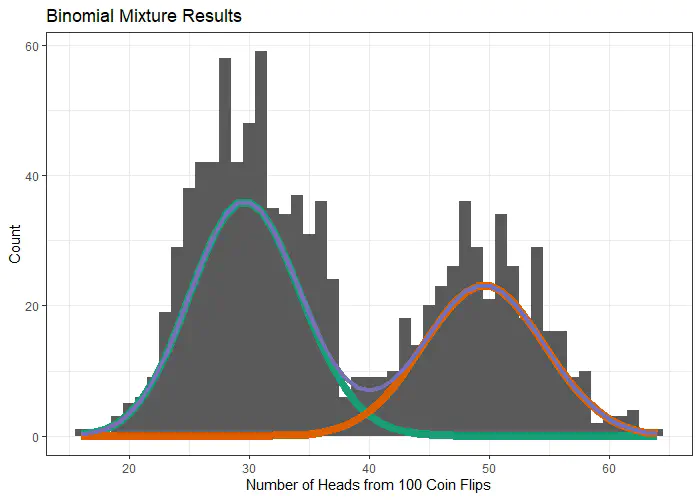
We can generate a population for a binomial mixture under the following assumptions: That we have a number n of true cases out of a possible number N total, and that these have a binomial distribution with
This is easier to visualize with a ‘coins in a pot’ example. Say we have a pot filled with two types of coins, each type of coin having its own probability of heads. We pull a number of coins S from the pot, flip each coin N times and record the number of n heads. Under these assumptions, the probability of seeing n heads for each coin would be:
or more generally for K different types of coins
where
Where
and our expectation is:
where
We can then use the following expressions to update